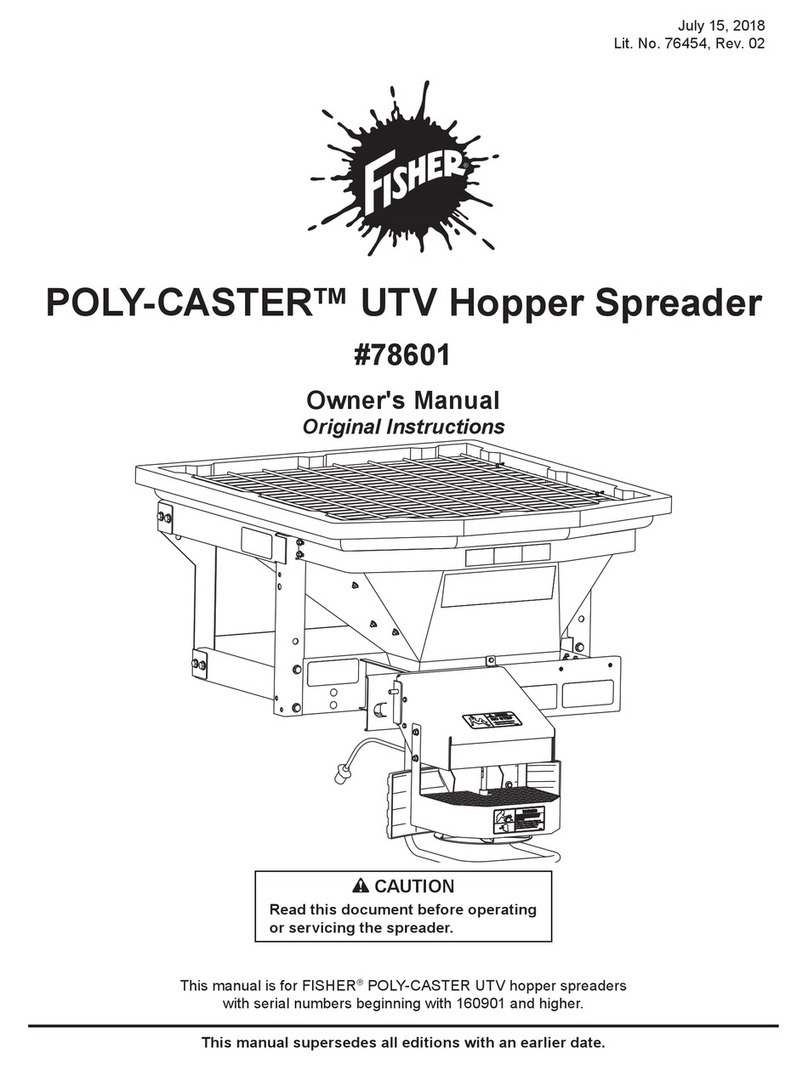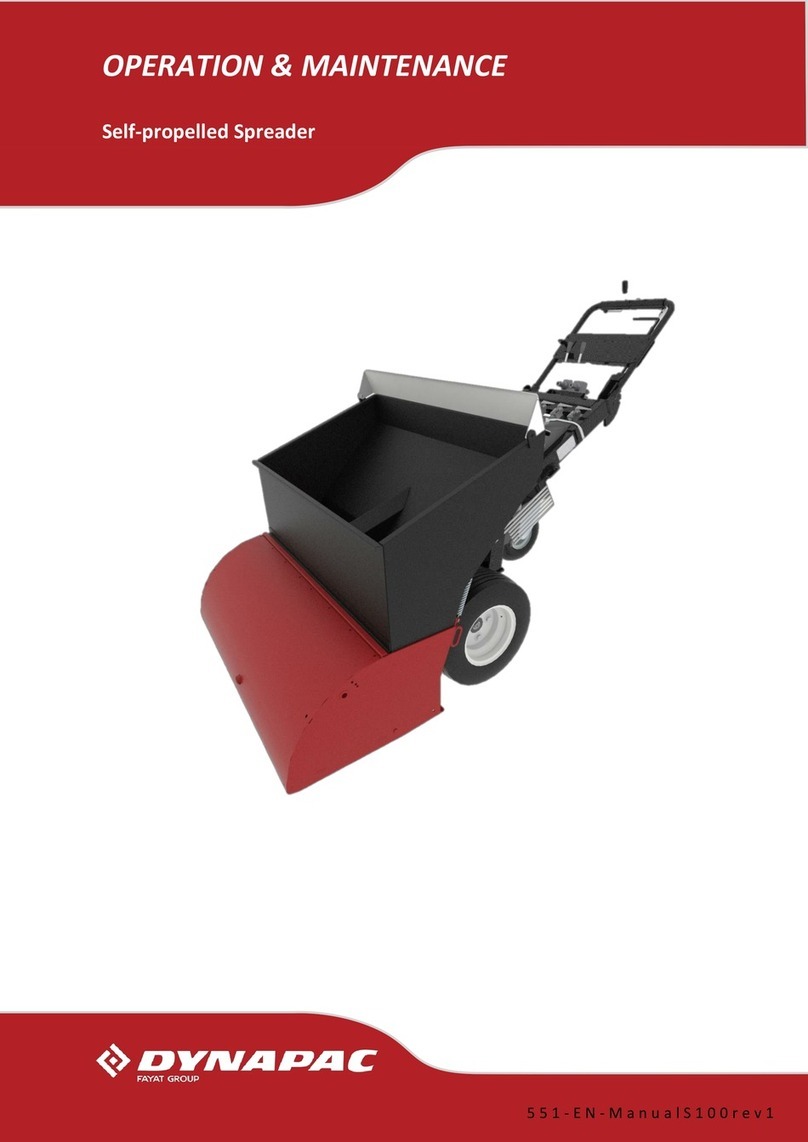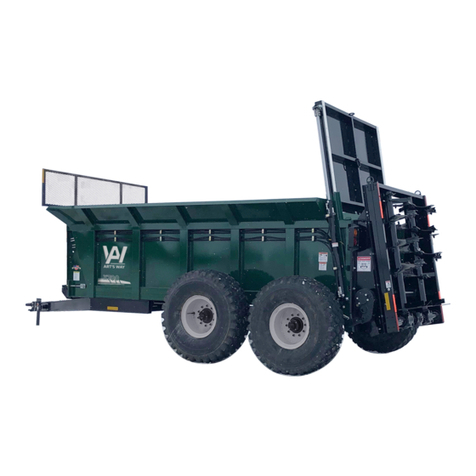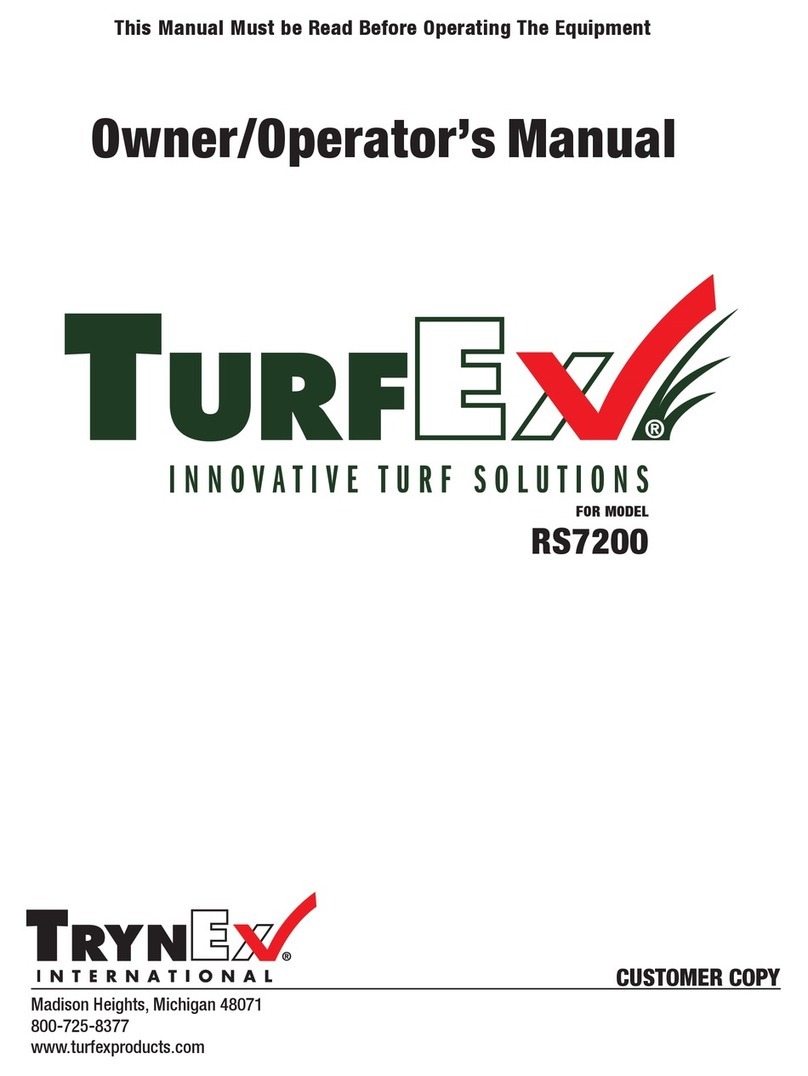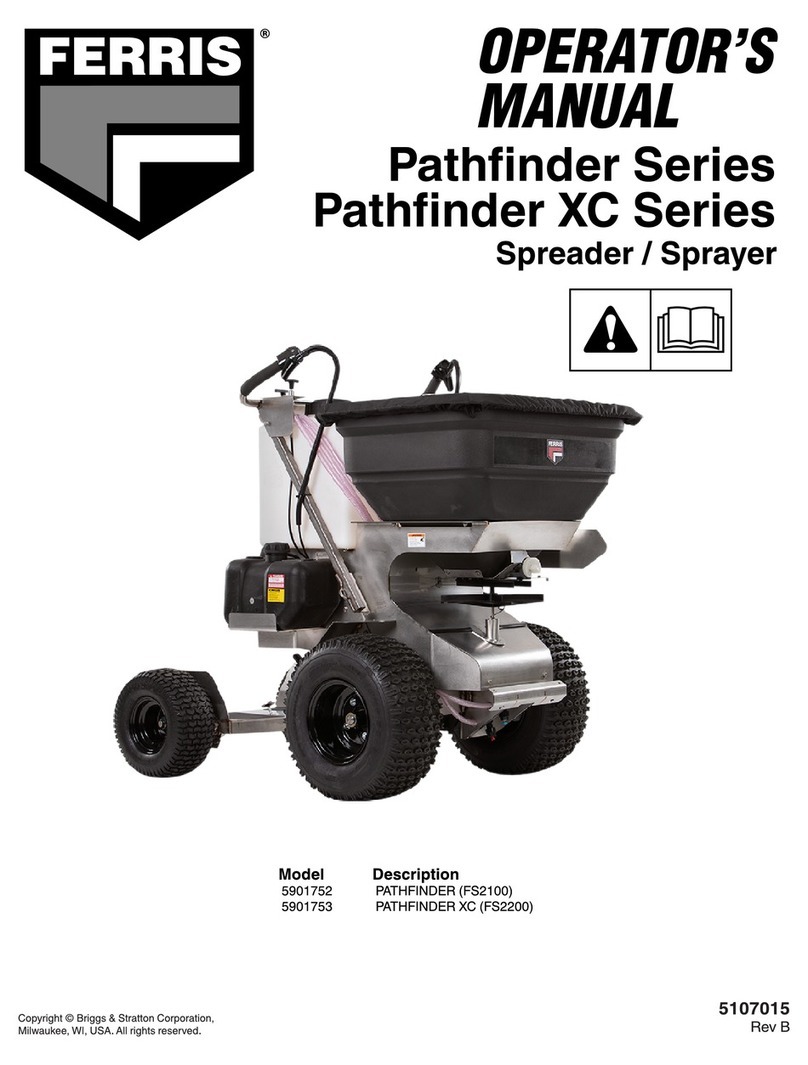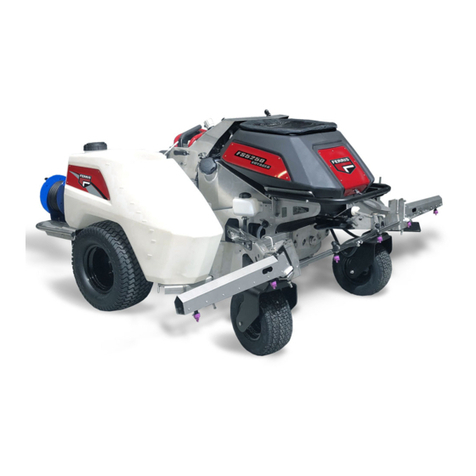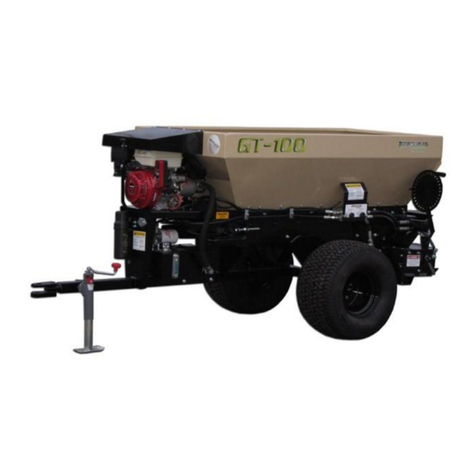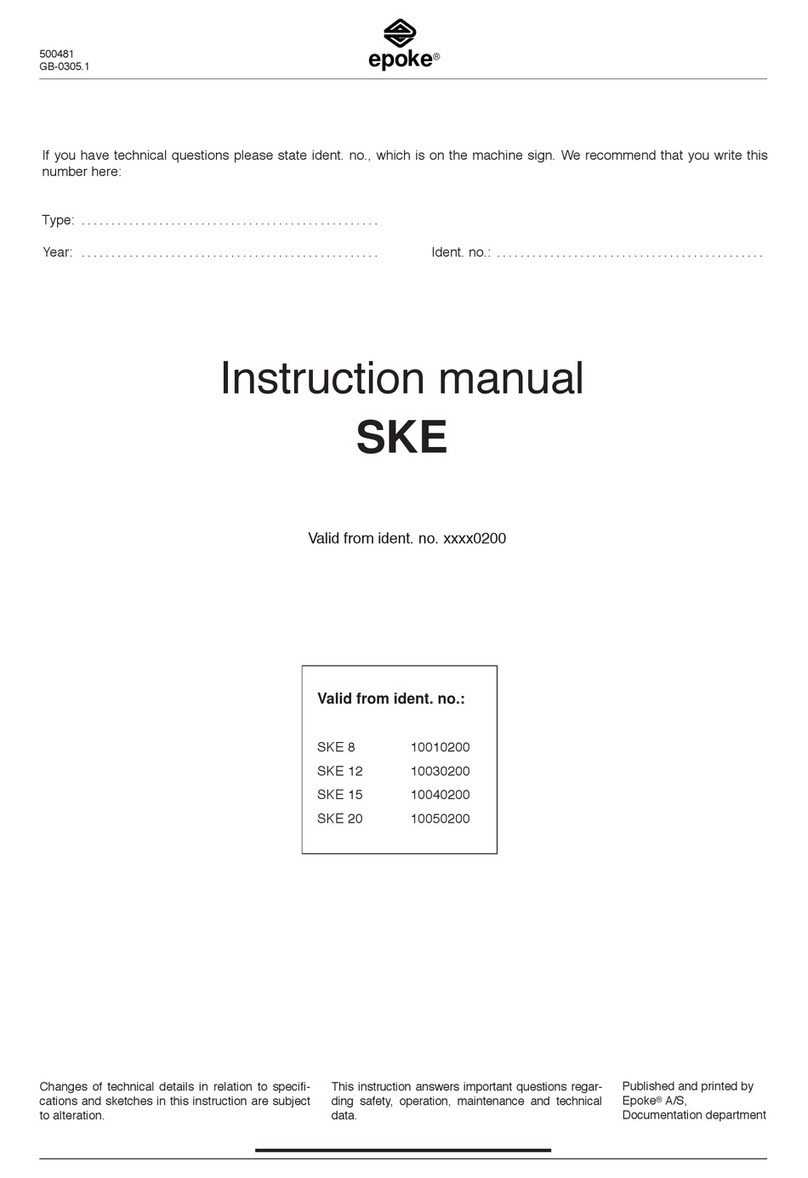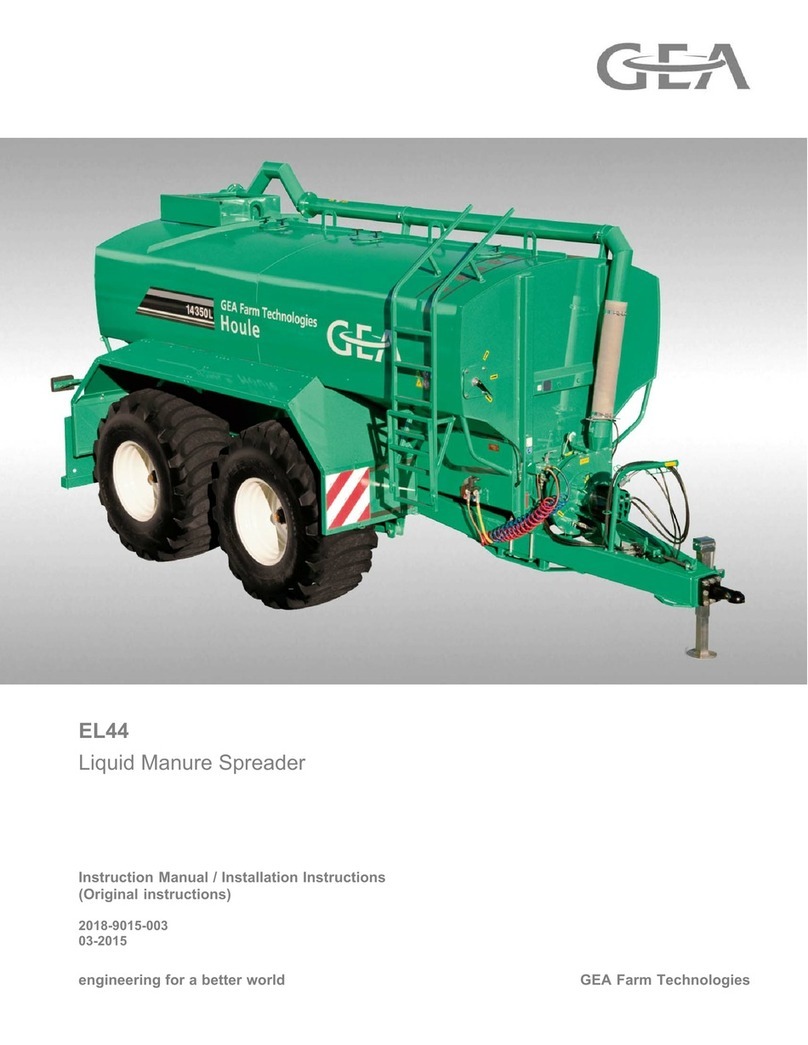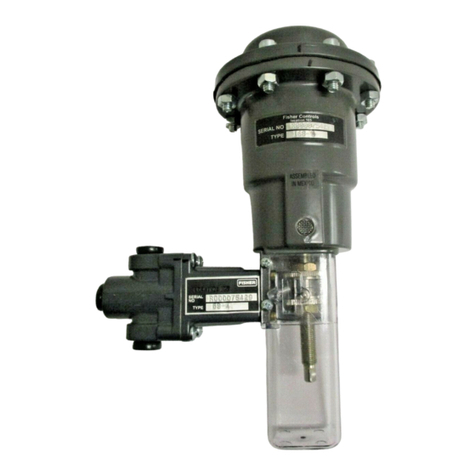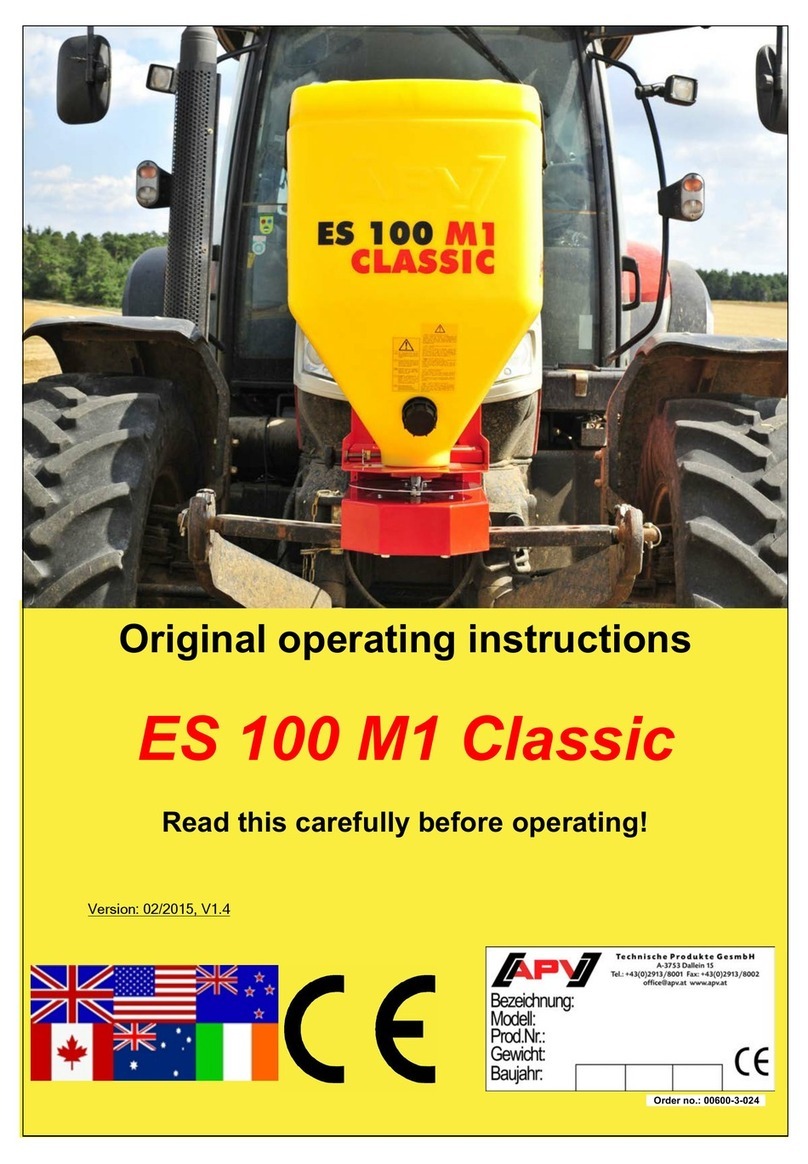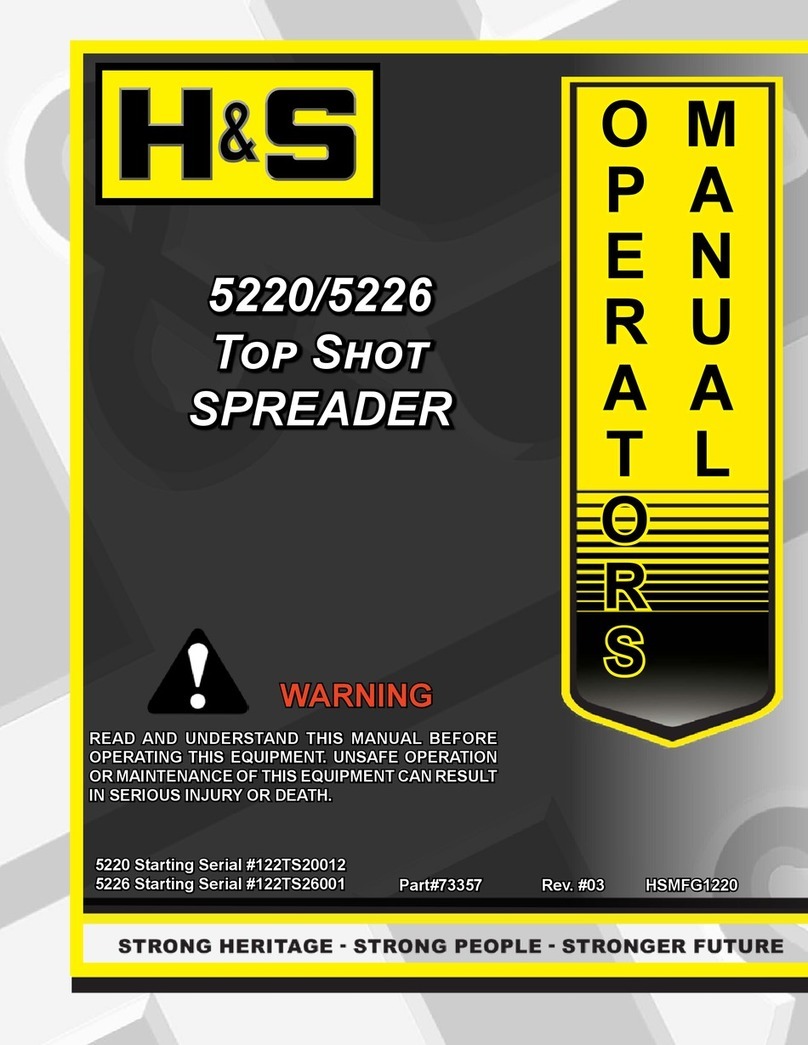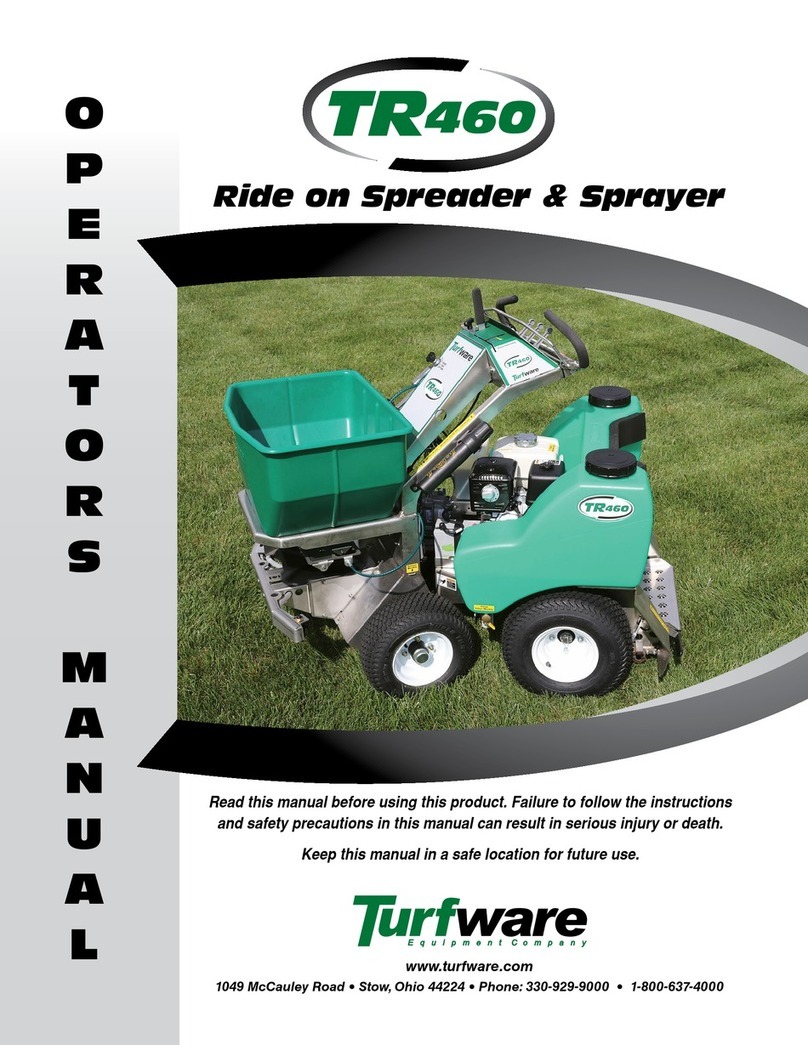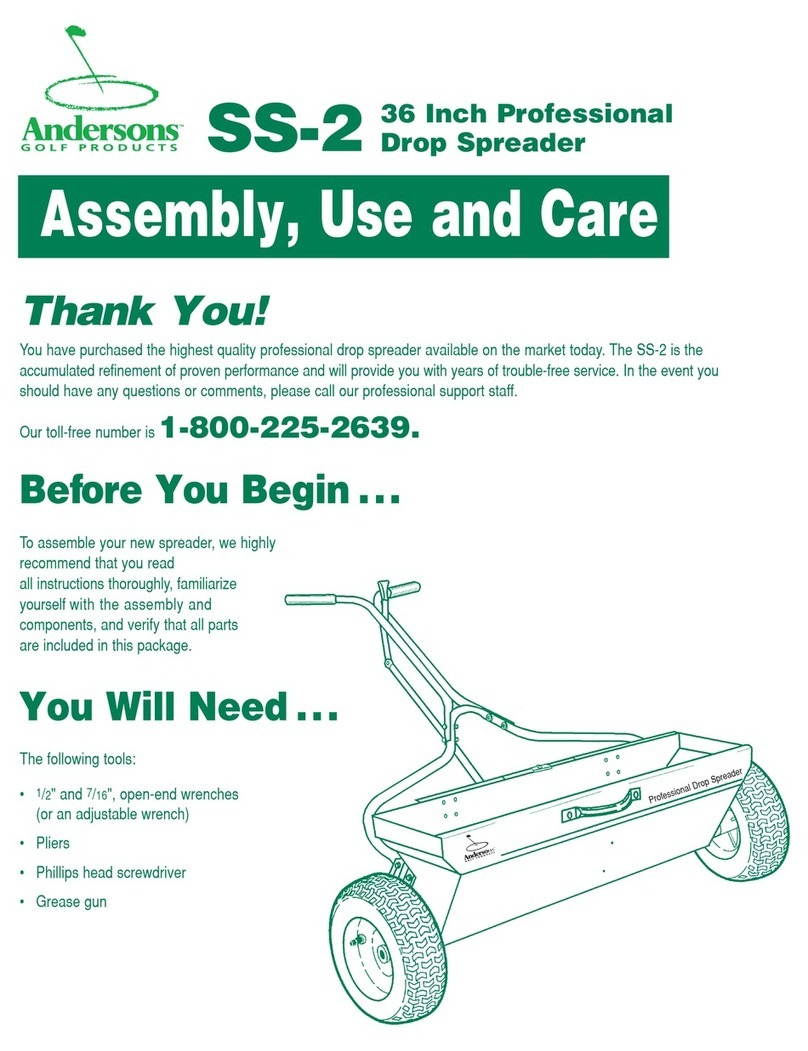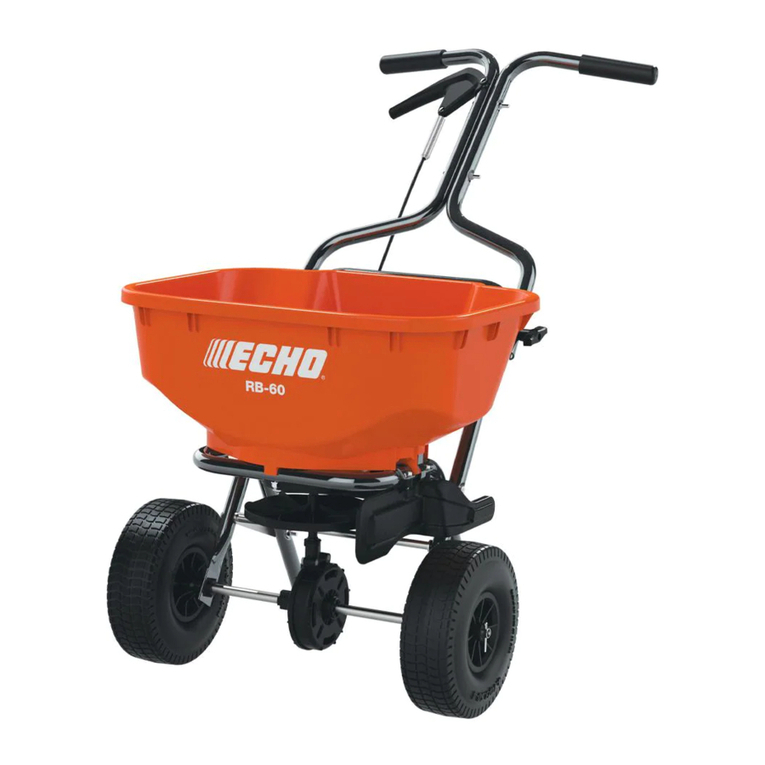
8 ferrismowers.com
• Keep all movement on the slopes slow and gradual. Do
not make sudden changes in speed or direction.
Do NOT:
• Avoid starting, stopping, and sharp turning on a slope. If
tires lose traction (i.e. machine stops forward motion on a
slope), stop and drive slowly off the slope.
• Do not turn on slopes unless necessary, and then, turn
slowly and gradually uphill, if possible. Never operate
straight down slopes.
• Do not operate near drop-offs, ditches, or embankments.
The operator could lose footing or balance or machine
could suddenly turn over if a wheel is over the edge of a
cliff or ditch, or if an edge caves in.
• Do not operate on wet grass. Reduced footing or traction
could cause sliding.
• Do not try to stabilize the unit by putting your foot on the
ground (ride-on units).
• Do not operate on slopes over 8° degrees.
• Do not operate on slopes if you cannot mount a slope
forwards.
Operating On Slopes
Learn how to operate the unit on slopes and use your body
position to improve traction and control of the machine.
Operation on slopes can be dangerous. Slopes are a major
factor related to accidents, which can result in severe injury or
death. Using the unit on a slope that is too steep where you
do not have adequate wheel traction (and control) can cause
sliding, loss of steering, control, and possible rollover. If you
feel unsure about operating the unit on a slope, don’t do it. It’s
not worth the risk.
• This machine has a high center of gravity and may
become unstable on slopes. Always lean towards the
slope of a hill when operating on slopes.
• Do not operate on slopes when grass is wet.
Go across slopes, not up and down.
• Operation down slopes can be dangerous and cause
sliding, loss of steering, control, and possible rollover. Do
NOT operate down a slope unless absolutely necessary.
Drive very slowly in the lowest gear and be careful. Never
make a sharp turn or sudden start or stop, as this can
cause loss of traction, sliding, loss of steering, control and
possible rollover. Apply the rear brakes first to slow your
speed while descending a slope.
• Avoid turning down slopes; if possible turn up slopes.
• Lean your body towards the uphill side drive wheel,
while keeping a firm grip on the handle bar. This body
position adds more weight to the uphill side drive wheel to
maximize traction and control.
• Always be very gentle operating the controls, travel at
a slower speed than normal. Practice operating up and
down slopes before traveling at normal speed.
• Do NOT accelerate quickly or change speed or direction
suddenly while operating, as this may cause the
machine’s front wheels to come off the ground (up
slopes) and to reduce the tendency to cause the machine
to slip and slide (down slopes).
Operate up and down slopes (only if you cannot operate
across the slope):
• It is recommended to operate up and down the face of
slopes only when you cannot operate across the slopes.
This may be the preferred technique for operating on very
gentle slopes and to avoid going across a slope.
• Operate up the slope and lean your body forward
(towards the control panel), while keeping a firm grip on
the handle bar. This body position helps keep the front
wheels on the ground.
• Do NOT accelerate quickly, as this may cause the
machine’s front wheels to come off the ground.
• Exert strong force and keep a firm grip on the handle bars
to maintain control and resist the machine tendency to
turn uphill.
• Operate down the slope and lean your body rearward,
while keeping a firm grip on the handlebar. This body
position adds more weight to the rear wheels and
improves stability, downhill braking, and control
Maintenance, Storage, and Safety
• Always observe safe refueling and fuel handling practices
when refueling the unit after transportation or storage.
• Always follow the engine manual instructions for storage
preparation before storing hte unit for both short and long
term periods.
• Always follow the engine manual instructions for proper
start-up procedures when returning the unit to service.
• Never store the machine or fuel container inside where
there is an open flame, such as in a water heater. Allow
unit to cool before storing.
• Do not store fuel near flames or drain indoors.
• Keep all hardware tight and keep all parts in good
working condition. Replace all worn or damaged decals.
• Never tamper with safety devices. Check their proper
operation regularly.
• Disengage spreader spinner, set parking brake, stop
engine and remove key or disconnect spark plug wire.
Wait for allmovement to stop before adjusting, cleaning,
or repairing.
• Clean grass and debris from moving parts, drives,
mufflers, and engine to prevent fires. Clean up oil or fuel
spillage.
• Let engine cool before storing and do not store near
flame.
• Stop and inspect the equipment if you strike an object.
Repair, if necessary, before restarting.
• Park machine on level ground. Never allow untrained
personnel to service machine.
• Use jack stands to support compnents when required.
• Carefully release pressure from components with stored
energy.
• Disconnect battery or remove spark plug wire before
making any repairs. Disconnect the negative terminal
